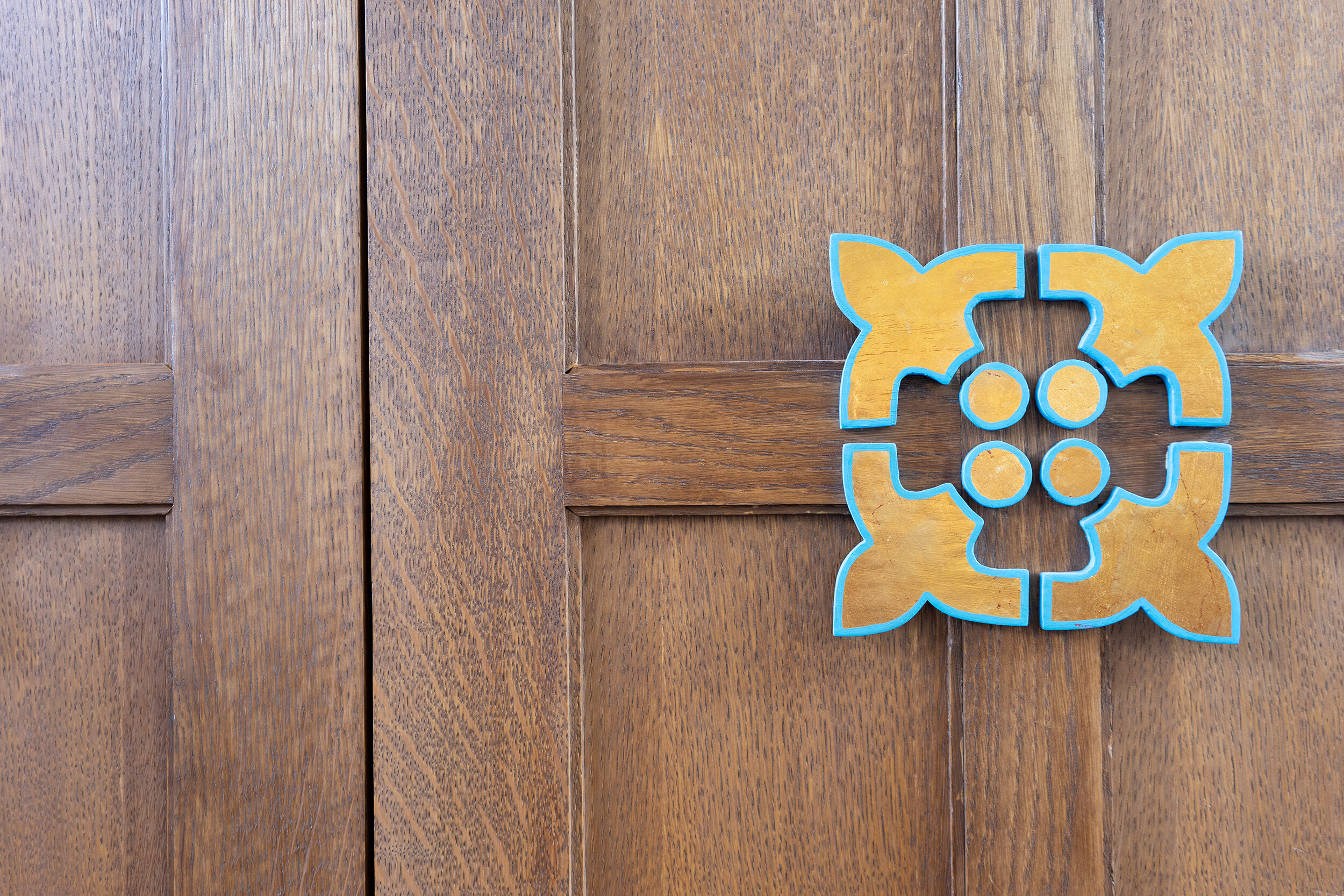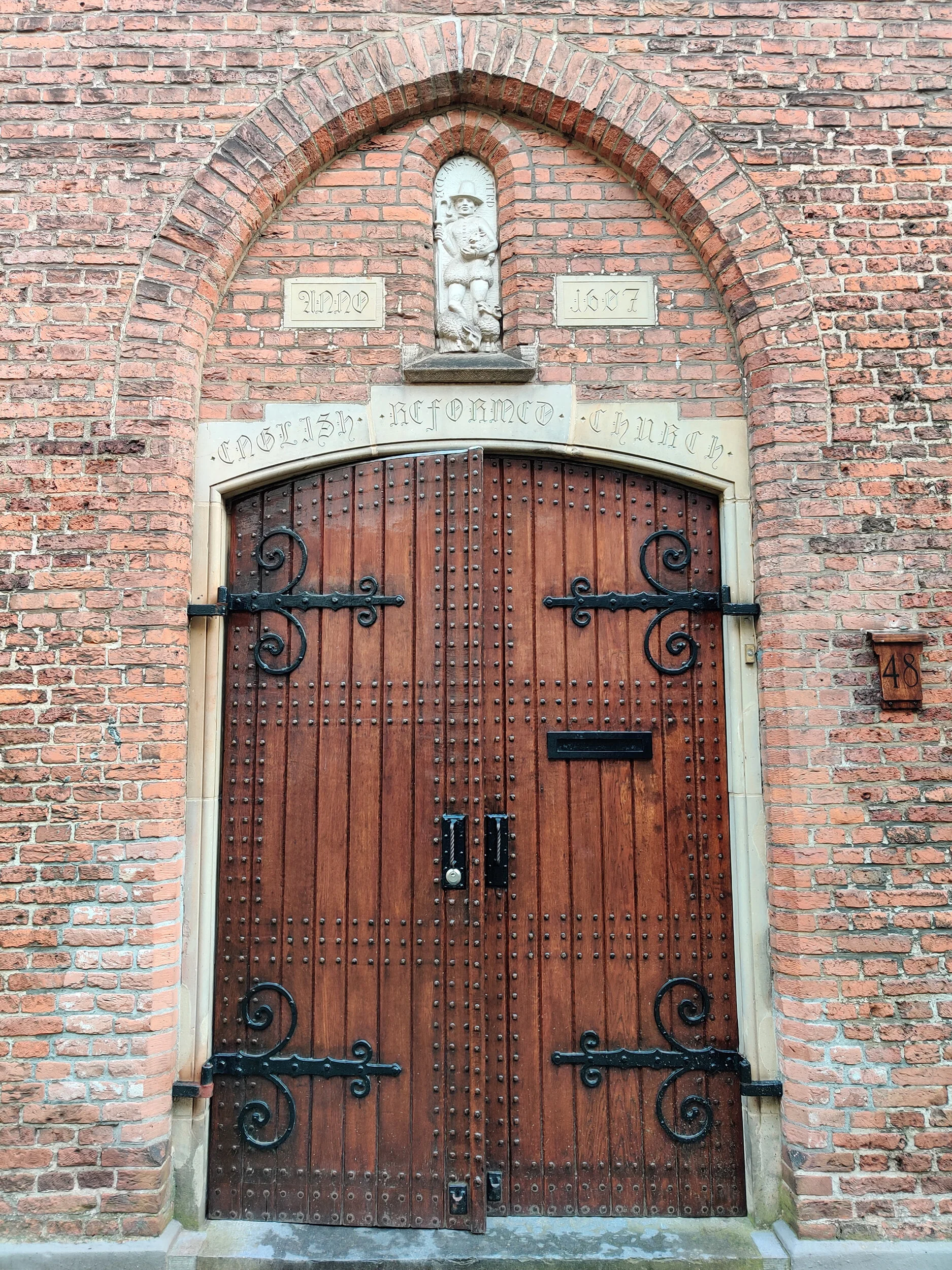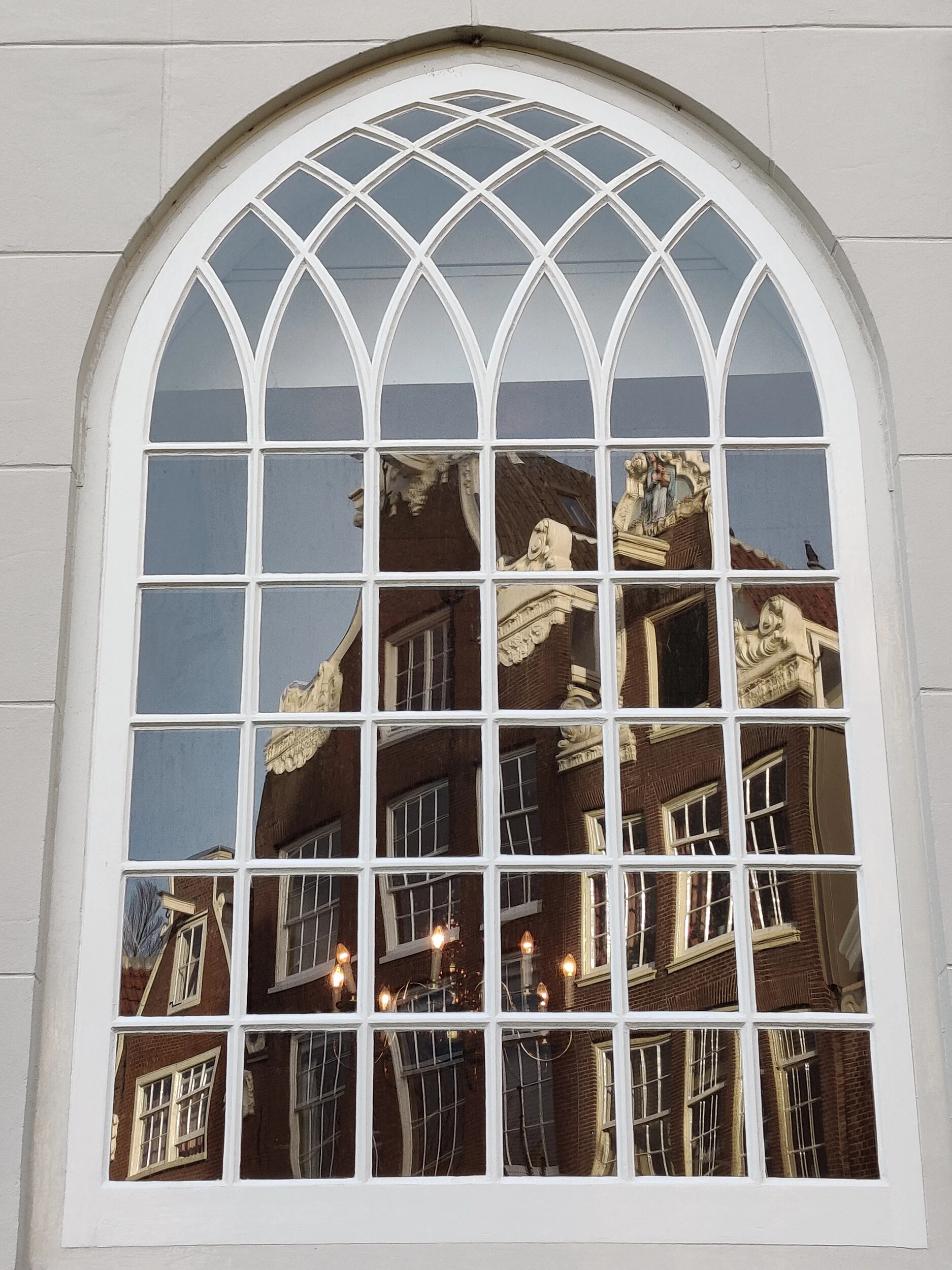
People with a history.
“Tomorrow morning I am going to the English church; it lies there so peaceful in the evening in that silent Begijnhof among the thorn hedges, and seems to say: In loco isto dabo pacem: In this place I shall give peace, says the Lord. Amen, so be it.”
— Vincent van Gogh
Our place.
The first church in the Begijnhof was consecrated in 1419 and provided a place of worship for the lay community of nuns, the Begijnen or Beguines, who lived in the court around. The wooden church, along with most of the Begijnhof and a significant part of Amsterdam was burnt down in the fire of 1421. All but the church tower was destroyed.
Towards the end of the fifteenth century, the Begijnhof and its chapel were rebuilt in brick and stone. During the Reformation the church was closed when the city fathers disallowed all but Reformed worship. The church lay unused for 20 years until it was given to the English-speaking worshippers in Amsterdam in 1607. Since then, our congregation has flourished, keeping English-language worship in the heart of Amsterdam except for a short period during German occupation in the Second World War.
Our leadership.
The English Reformed Church is Presbyterian and has developed a unique identity over the years, especially as ties between Scotland and the Netherlands have strengthened. As well as belonging to the Protestant Church of the Netherlands (PKN) our church is now fully part of the Church of Scotland in the Presbytery of International Charges. We are, however, an extremely multi-national church, reflecting our Amsterdam context, with members drawn from all over the world.
The life of the church is governed by the Consistory (or Kirk Session), comprising a group of members of the congregation known as ‘elders’. The Consistory represents the breadth of the congregation in age and background. Chaired by our minister, the Consistory oversees the congregation and its activities, providing guidance, pastoral care and leadership.
Our heritage.
The English Reformed Church Amsterdam is a Rijksmonument and home to notable objects which support and enrich our regular worship.
The Flentrop Organs
The English Reformed Church Amsterdam houses two excellent organs, both built by the Dutch firm Flentrop. The main organ was completed in 2000 after several years of fundraising, designing, building and fine-tuning. It is one of the finest organs in the Netherlands and a near replica of the original instrument completed for our church by the renowned Dutch organ builder Christian Müller in 1753. Under the leadership of our Organist and Music Director, Richard Zook, our organs can be heard each Sunday during worship service, in solo repertoire as well as in leading the congregation in singing.
Mondriaan and more
Our minister’s pulpit is decorated with a set of carved panels designed by Piet Mondriaan and carved by Edema van der Tuuk to commemorate the accession to the throne in 1898 of Queen Wilhelmina. Within the pulpit stands on a desk supported by a fine brass lectern donated to the church in 1689 by Stadholder William III of Orange and his wife Mary Stuart when they were called to be joint monarchs of Great Britain.
At the back of our chancel is the only stained glass window in the church, gifted in 1920 by Mr Edward Bok of the United States of America on the occasion of the 300th anniversary of the departure of the Pilgrim Fathers from Leiden to the New World. Many of the Pilgrim Fathers had previously lived in Amsterdam and this is marked by the presence of the window in our church.
Past parishioners
Our church is full of references to past parishioners. The floor of the church consists almost entirely of gravestones. Beguines were buried beneath the floor of the church right up to 1818; others, the baroque composer Locatelli among them, were buried under the slabs as well, having bought their space from Consistory. Panels listing those who have served our congregation are mounted on the walls throughout the church building, along with records of births and deaths. Documentation of church life throughout the years is held in the ERC Archive.
On the rear wall of the church below the main organ hangs is a framed facsimile of the first page of the first sermon that John Paget preached in the church on 5 February 1607. The subject of his sermon, Create in me a clean heart, O God (Psalm 51:10) is repeated with emphasis on the chancel wall below our stained glass window.
The interior layout of the church and the objects it houses are described in further detail in our Visitor’s Guide.
Our Friends.
In 1970, a friend of the church, Mr Gerard Rhee, registered a foundation called the Friends of the English Reformed Church whose aim was and is to give support in any way possible to maintain the presence of the church in the city as a place of worship, as a concert venue and as a meeting place for many people and cultures. Over the past 45 years the Friends Foundation has carried out its task through involvement in 2 major restorations of the church building in 1972 and 2006, development of a concert program, acquisition and renovation of the manse in 2000 and much more.
It continues to be the goal of the Friends Foundation to be able to maintain and build a reserve fund to care for the English Reformed Church. Support is welcome through single gifts or periodical donations.
Planning a visit?
We welcome visitors to the church during the week and on Sundays for worship at 10.30. Weekday visiting hours are subject to change depending on the use of the church building and the availability of our volunteer Church guides. Please consult our Calendar to confirm our most up-to-date visiting hours.












